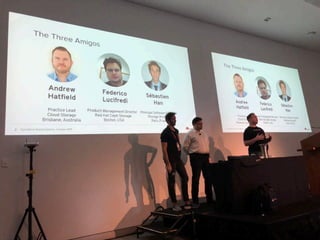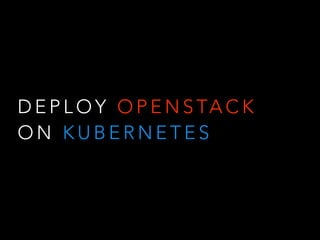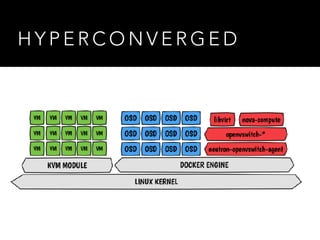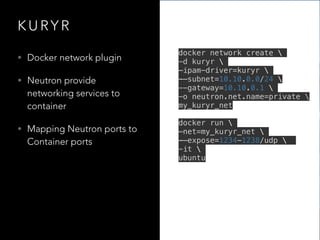How Kubernetes make OpenStack & Ceph better
- 1. H O W K U B E R N E T E S M A K E O P E N S TA C K & C E P H B E T T E R C H A R N S I L P C H I N P R A S E R T C L O U D S O L U T I O N A R C H I T E C T, N I PA C L O U D
- 2. C H A R N S I L P C H I N P R A S E R T C L O U D S O L U T I O N A R C H I T E C T
- 3. P U B L I C C L O U D
- 4. F E AT U R E S • Monitoring • Private Network • Eco Tier • Floating IP • Key pairs • Volumes(beta)
- 5. O P E N S TA C K S U M M I T S Y D N E Y 2 0 1 7
- 9. O P E N S TA C K W H AT I S
- 10. C E P H S T O R A G E W H AT I S
- 11. D AY 2 O P E R AT I O N S ! ! !
- 12. D E P L O Y O P E N S TA C K O N K U B E R N E T E S
- 13. P R O D U C T I O N - G R A D E C O N TA I N E R O R C H E S T R AT I O N K U B E R N E T E S • C O N TA I N E R • C L U S T E R • L O A D B A L A N C E R • S E L F H E A L I N G • A U T O S C A L I N G • R O L L I N G U P G R A D E
- 14. I N F R A S T R U C T U R E A S A C O D E
- 15. O P E N S TA C K O N K 8 S
- 16. H Y P E R C O N V E R G E D
- 17. D E P L O Y M E N T
- 18. K O L L A • Provide Dockerfiles for build OpenStack Docker images • Kolla-Ansible • Kolla-Kubernetes
- 19. O P E N S TA C K H E L M • Helm is Kubernetes Package Manager • Pre-configured Kubernetes Resources • Reuse K8S resource files for different environments • AT&T and SKTelecom
- 20. – J O H N N Y A P P L E S E E D “Type a quote here.”
- 21. D E P L O Y K U B E R N E T E S O N O P E N S TA C K
- 22. K U RY R • Docker network plugin • Neutron provide networking services to container • Mapping Neutron ports to Container ports docker network create -d kuryr —ipam-driver=kuryr -—subnet=10.10.0.0/24 --gateway=10.10.0.1 -o neutron.net.name=private my_kuryr_net docker run —net=my_kuryr_net -—expose=1234-1238/udp -it ubuntu
- 23. K U RY R - K 8 S • Make Neutron aware of Kubernetes Networking • OpenStack VMs and Kubernetes Pods on the same Neutron Network • Avoid double encapsulation
- 24. F U X I • Volume provisioner • Watching K8S PVCs api for create, update and delete Cinder Volumes • FlexVolume driver • K8S Custom Volume plugin for attach, detach and mount volume.
- 25. K U RY R K U B E R N E T E S
- 26. C O N TA I N E R I Z E D O P E N S TA C K C L O U D K U B E R N E T E S • Self healing • Load balancing • Automated rolling outs and rolling backs • Minimise OpenStack Control plan nodes • No overlay networks
- 27. C O N C L U S I O N • Containerized OpenStack Cloud • Hyperconverged • Kuryr Kubernetes • Fuxi Kubernetes • Kolla • OpenStack Helm
- 28. – C H A R N S I L P C H I N P R A S E R T, N I PA C L O U D “May the force be with you” Thank you




























